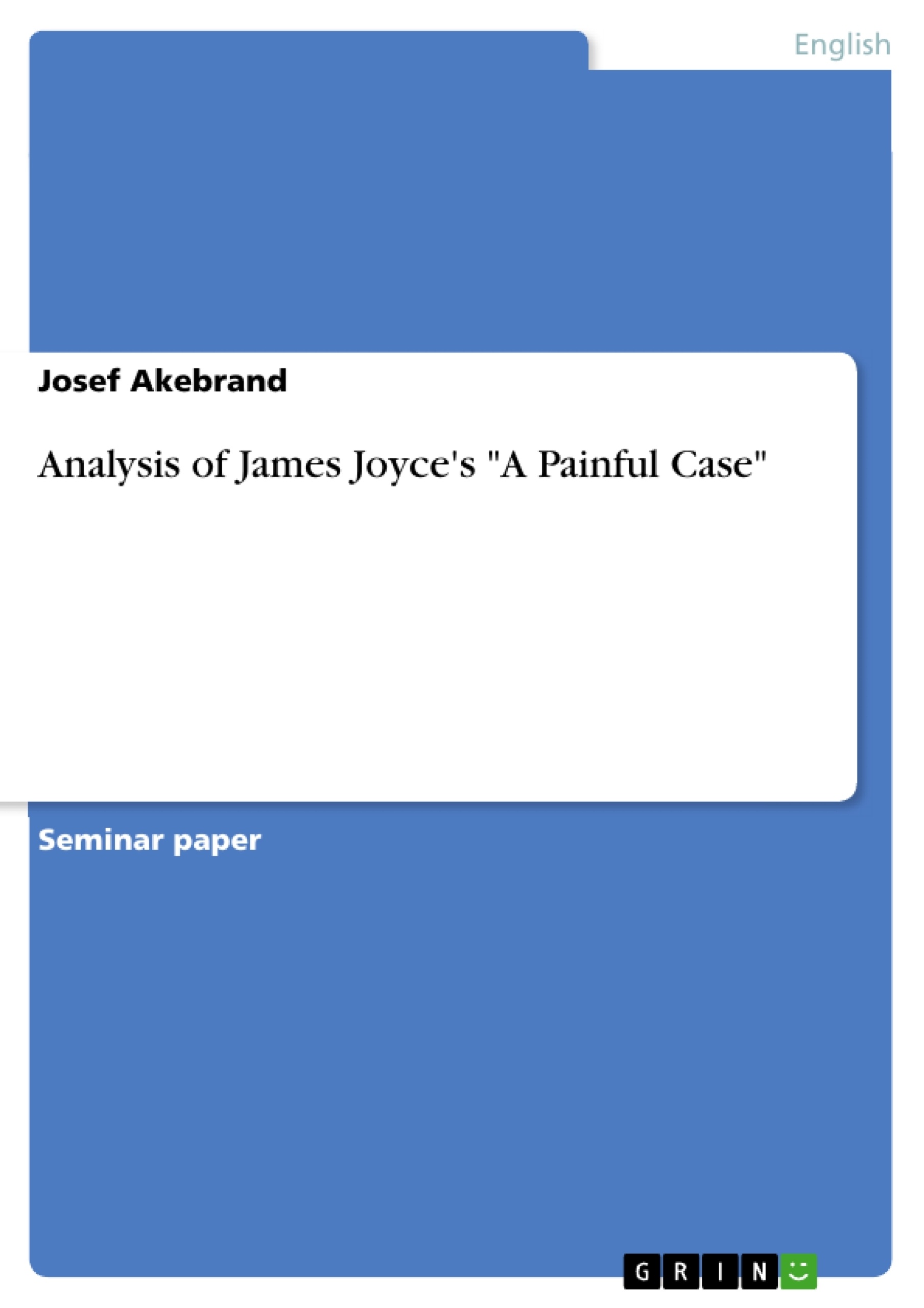Though James Joyce's talent for words was not fully appreciated in his day, yet he was known for being a gifted writer with excellent narrative abilities. Literature experts agree that these skills were mainly shaped during the creation of “Dubliners”, a volume of more comprehensible short stories published in 1914.
The genius of this collection revolving round the ill-fated lower middle class life in early 20th century Dublin is the lively description of the individual characters contained therein. Joyce accomplished these detailed characterizations by mainly using actual friends and acquaintances as well as enemies as models for his characters.
In “A Painful Case”, the “most sophisticated and complex ‘Dubliners’ story” (Adam Sexton), it is apparent that James Joyce himself serves as a blueprint for the main character of the story, James Duffy. Accordingly, this written work contends that "A Painful Case" is in reality a glimpse at Joyce’s own personal life, and more particularly at the relationship to his future wife Nora Barnacle.
Inhaltsverzeichnis (Table of Contents)
- I. Introduction
- II. Analysis
- Language and Perspective
- Literary Elements
- Setting
- III. Literature
Zielsetzung und Themenschwerpunkte (Objectives and Key Themes)
This essay provides an analysis of James Joyce’s “A Painful Case” from the collection “Dubliners”. The essay seeks to explore the narrative elements of the story, including the language, perspective, and setting. The essay suggests that the story may be inspired by the author's own life and relationships. Key themes examined include:- The influence of language and perspective on interpretation
- The use of symbols and narrative elements to portray themes of decay and paralysis
- The significance of setting in shaping character and relationship dynamics
- The exploration of a failed relationship and its implications
- The author's personal experiences and their potential influence on the story.
Zusammenfassung der Kapitel (Chapter Summaries)
Introduction
The introduction discusses James Joyce's literary legacy, highlighting his mastery of language and narrative in works such as “A Portrait of the Artist as a Young Man” and “Ulysses”. It asserts that Joyce honed his writing skills during the creation of “Dubliners,” a collection of short stories that provides insights into lower-middle class life in early 20th century Dublin. The introduction emphasizes the author's use of real people as models for his characters and suggests that "A Painful Case" is a reflection of Joyce's own relationship with his future wife, Nora Barnacle.Analysis: Language and Perspective
The analysis focuses on key literary elements of “A Painful Case”, including language, perspective, focalization, narrative, and time. The essay notes that the story is written in the past tense from a third-person perspective, with a fixed focalization on the protagonist's limited perception of the world. This creates a figural narrative situation, forcing the reader to rely on the character's interpretations. The analysis discusses the limited use of direct speech and its significance in highlighting the lack of development in the relationship between the main characters. The essay further explores the use of time as a narrative element, emphasizing the "hopelessness" of the story through the pacing of events.Analysis: Literary Elements
This section explores the use of symbolism in “A Painful Case,” highlighting the frequent use of the colors yellow and brown to represent decay and paralysis. The essay also analyzes the significance of narrative as a key literary element, suggesting that the protagonist's “odd autobiographical habit” implies a detachment from reality and an inclination towards constructing narratives. The essay explores the possibility that the story itself is a fictionalized account, potentially inspired by a newspaper article about a woman the protagonist may not have even known.Analysis: Setting
This part of the analysis examines the significance of setting in shaping the characters and themes of “A Painful Case.” The essay discusses the relevance of the two key locations: Chapelizod, a suburb of Dublin, and the city of Dublin itself. The analysis highlights Joyce's negative perception of Dublin as a city in limbo, reflecting themes of decay and paralysis. The essay also explores the historical significance of Chapelizod, linking its name to the legend of Tristan and Iseult and emphasizing the theme of failed relationships in Dublin.Schlüsselwörter (Keywords)
The key themes and concepts explored in this essay include: James Joyce, “Dubliners,” “A Painful Case,” language, perspective, focalization, narrative, time, symbolism, decay, paralysis, setting, Dublin, Chapelizod, Tristan and Iseult, relationships, and failed relationships.- Quote paper
- Josef Akebrand (Author), 2008, Analysis of James Joyce's "A Painful Case", Munich, GRIN Verlag, https://www.grin.com/document/112281



